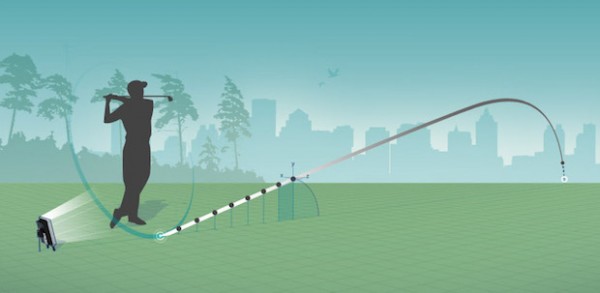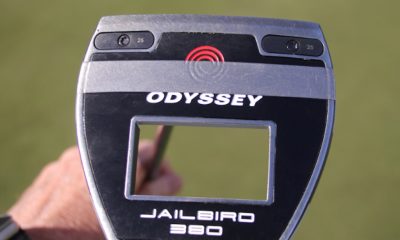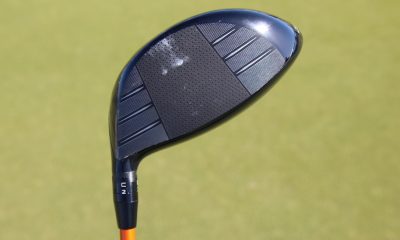Instruction
7 questions to ask yourself before you change golf instructors

Sometimes, a teacher-player relationship just isn’t working out. It’s a natural progression in the career of most avid golfers, whether they want to make a major swing change or simply want a new perspective on their game. Even the best player in the world, Tiger Woods, hasn’t hesitated to switch coaches when he thought the time was right.
As a golf instructor, all I can do is understand the goals of my players and try to eradicate their problems as quickly and as efficiently as possible. Sometimes it’s easy and other times it’s very difficult. The fact remains that me and most of my colleagues are trying as hard as we can, and if you listen to us and apply what we are telling you, I believe that you WILL get better. But in the real world, sometimes it just doesn’t click — just more proof of how hard golf is — and that can be frustrating for any golfer (and teacher).
Think you need a new coach? Here are seven things you should consider before making the change.
No. 1: Does your teacher use a swing model for all his students?
Let’s say you have selected a teacher who uses a very specific swing model and you have been working with him consistently. You cannot seem to master the move that the entire system hinges upon, no matter how hard you try. Well, you’re probably in for a lot of trouble.
Does the teacher suggest alterations of his system that works better with your physical makeup or idiosyncrasies? If not, and you are stuck, then this style will never work for you. If you want to improve, then it’s time to make a change to someone who will work with your natural swing.
Don’t force yourself into a swing model that doesn’t work for you.
No. 2: Does your teacher have advanced teaching tools?
I am not suggesting that teachers without technologies such as FlightScope, Trackman, high-speed video or force plates cannot be top-quality teachers, but that’s not the point. I routinely see my students improve faster with these technologies, because they provide immediate, unbiased feedback to me — and maybe more importantly my students.
As a golfer, it’s crucial to see and feel what’s going on and have tools to audit your progress. I use technology as a way to show my students that what we’re working on is indeed the best thing for their game, and by comparing numbers and/or position from the past, we have a way to quantify our progress.
There isn’t a teacher on this planet who can see everything that goes on in the swing — and no one who can see in accurately in degrees — so if your teacher does not use technology my first question would be, “Why not?” I have seen some great teachers who don’t use much technology, but I have also seen many teachers who shy away from using technology because of a lack of education.
Don’t get caught with a teacher who rejects new technology.
No. 3: Does your instructor work with golfers who are better than you?
One of the biggest indicators of an instructor’s talent level is to observe their best students and see how they compare to you.
Does this teacher only deal with beginners? Does he only work with high handicappers? Those are warning signs for better players. After all, if you aspire to be a tour player, wouldn’t you want a teacher who teaches a ton of tour players? Of course you would.
Ideally, a teacher would have a stable full of players who have shown improvement and play at a level that you would like to attain. Most teachers are comfortable with a certain level of player and tend to stay there, which can hamper their ability to teach more advanced players. Find a teacher who is comfortable teaching the level of player you want to become and you have found your teacher.
Find an instructor who teaches golfers who are better than you are.
No. 4: Does your teacher recognize your learning style?
It is widely known that there are a few learning styles — the most common being visual, verbal, and kinesthetic — and the use of these systems must correlate with your teacher’s delivery or you will have communication issues.
Does your teacher recognize and teach you in the way which you learn best? Do you think Fred Couples (a kinesthetic learner) would work well with a verbal teacher who explained everything to the n’th degree? Of course not — his head would explode! If you are a visual learner and your instructor only focuses on putting you in positions that you should feel, you will not improve. Find a teacher who understands YOU and how YOU learn and you will be successful.
It took me a long time to learn how to teach someone in all three styles — I was more of a verbal learner so I tried to verbalize everything. Needless to say, it was not always the most effective technique. It was only when I became more proficient within these styles that my students got better quicker and with less effort on their part. So if your teacher is going against the grain of your learning style, it’s time to move on.
Find an instructor who understands your learning style.
No. 5: Does your teacher take your goals into account?
Does your teacher interview you at the beginning of each lesson, asking you what you’d like from your golf game? What shot is plaguing you? What you are doing well? Doing poorly? What you are feeling? If not, then you might not be with an instructor who is in tune with the direction you want to go in as a player.
I get all kinds of requests — some make sense, others do not. I have players who shoot between 85 to 95 hitting fades, but they say they are happier shooting 90 to 105 if they can consistently hit a draw. Does that make any sense? Nope, but that’s what they want. Teaching is not about MY personal agenda, so I try to use two ears and one mouth during the interview process. From there, I can identify what my students want from me and what type of golfers they’d like to become.
Find a teacher who is willing to help you achieve your goals.
No. 6: Is your instructor a know-it-all?
The great thing about teaching golf in today’s climate is that there is a wealth of people helping us all learn how to teach better. When I came up, golf instruction was a closed shop — no one wanted to give their secrets away. Now we all routinely discuss what we do and how we do it, and we meet at national seminars to listen to the experts in the field. Just this season I have been to five seminars where we’ve had people speak on various subjects — some that I knew all about and others that I did not. No matter how much I know, I believe there’s always more to learn.
You must be wary of the instructor who feels or gives the appearance that they know it all, because they don’t — no one does. If your teacher is not watching others teach and continuing to expand his knowledge base, then he is being left behind as a teacher. We are learning more about the golf swing and the body each and every day and if you don’t seek new information you will not improve your instructional style.
Find the teacher who is eager to learn, accepts mistakes, and is striving to get better by listening to others.
No. 7: Has your instructor been featured in magazines, blogs or won any awards?
Recognition comes in many form, and I am not saying that if your instructor is not ranked in the Top 100 or Top 50 of the major golf magazines that he is not a good coach. If I was a student, however, I would like to see my coach in my state or region’s top teacher listings. If not, I’d like to see him doing something to gain recognition. Is he publishing instruction articles or videos on his site or another site? That’s one of the best ways to get to know a potential instructor.
I have yet to meet a teacher who didn’t want more clients to choose from, as well as more awards, top-teacher lists, certifications and exposure. These are the best ways for instructors to set themselves apart from the masses, a very few top teachers don’t want such distinctions.
Find someone who is striving to be the very best teacher they can be — one that takes all the steps necessary to grow their name and business. You don’t want the teacher who shows up, teaches and then goes home.
Find a teacher who is committed to his career.
- LIKE7
- LEGIT4
- WOW2
- LOL2
- IDHT2
- FLOP2
- OB2
- SHANK2
Instruction
The Wedge Guy: The easiest-to-learn golf basic

My golf learning began with this simple fact – if you don’t have a fundamentally sound hold on the golf club, it is practically impossible for your body to execute a fundamentally sound golf swing. I’m still a big believer that the golf swing is much easier to execute if you begin with the proper hold on the club.
As you might imagine, I come into contact with hundreds of golfers of all skill levels. And it is very rare to see a good player with a bad hold on the golf club. There are some exceptions, for sure, but they are very few and very far between, and they typically have beat so many balls with their poor grip that they’ve found a way to work around it.
The reality of biophysics is that the body moves only in certain ways – and the particulars of the way you hold the golf club can totally prevent a sound swing motion that allows the club to release properly through the impact zone. The wonderful thing is that anyone can learn how to put a fundamentally sound hold on the golf club, and you can practice it anywhere your hands are not otherwise engaged, like watching TV or just sitting and relaxing.
Whether you prefer an overlap, interlock or full-finger (not baseball!) grip on the club, the same fundamentals apply. Here are the major grip faults I see most often, in the order of the frequency:
Mis-aligned hands
By this I mean that the palms of the two hands are not parallel to each other. Too many golfers have a weak left hand and strong right, or vice versa. The easiest way to learn how to hold the club with your palms aligned properly is to grip a plain wooden ruler or yardstick. It forces the hands to align properly and shows you how that feels. If you grip and re-grip a yardstick several times, then grip a club, you’ll see that the learning curve is almost immediate.
The position of the grip in the upper/left hand
I also observe many golfers who have the butt of the grip too far into the heel pad of the upper hand (the left hand for right-handed players). It’s amazing how much easier it is to release the club through the ball if even 1/4-1/2″ of the butt is beyond the left heel pad. Try this yourself to see what I mean. Swing the club freely with just your left hand and notice the difference in its release from when you hold it at the end of the grip, versus gripping down even a half inch.
To help you really understand how this works, go to the range and hit shots with your five-iron gripped down a full inch to make the club the same length as your seven-iron. You will probably see an amazing shot shape difference, and likely not see as much distance loss as you would expect.
Too much lower (right) hand on the club
It seems like almost all golfers of 8-10 handicap or higher have the club too far into the palm of the lower hand, because that feels “good” if you are trying to control the path of the clubhead to the ball. But the golf swing is not an effort to hit at the ball – it is a swing of the club. The proper hold on the club has the grip underneath the pad at the base of the fingers. This will likely feel “weak” to you — like you cannot control the club like that. EXACTLY. You should not be trying to control the club with your lower/master hand.
Gripping too tightly
Nearly all golfers hold the club too tightly, which tenses up the forearms and prevents a proper release of the club through impact. In order for the club to move back and through properly, you must feel that the club is controlled by the last three fingers of the upper hand, and the middle two fingers of the lower hand. If you engage your thumbs and forefingers in “holding” the club, the result will almost always be a grip that is too tight. Try this for yourself. Hold the club in your upper hand only, and squeeze firmly with just the last three fingers, with the forefinger and thumb off the club entirely. You have good control, but your forearms are not tense. Then begin to squeeze down with your thumb and forefinger and observe the tensing of the entire forearm. This is the way we are made, so the key to preventing tenseness in the arms is to hold the club very lightly with the “pinchers” — the thumbs and forefingers.
So, those are what I believe are the four fundamentals of a good grip. Anyone can learn them in their home or office very quickly. There is no easier way to improve your ball striking consistency and add distance than giving more attention to the way you hold the golf club.
More from the Wedge Guy
- The Wedge Guy: Golf mastery begins with your wedge game
- The Wedge Guy: Why golf is 20 times harder than brain surgery
- The Wedge Guy: Musings on the golf ball rollback
- LIKE83
- LEGIT13
- WOW5
- LOL1
- IDHT0
- FLOP4
- OB1
- SHANK8
Instruction
Clement: Stop ripping off your swing with this drill!

Not the dreaded headcover under the armpit drill! As if your body is defective and can’t function by itself! Have you seen how incredible the human machine is with all the incredible feats of agility all kinds of athletes are accomplishing? You think your body is so defective (the good Lord is laughing his head off at you) that it needs a headcover tucked under the armpit so you can swing like T-Rex?
- LIKE0
- LEGIT2
- WOW2
- LOL0
- IDHT0
- FLOP0
- OB0
- SHANK2
Instruction
How a towel can fix your golf swing

This is a classic drill that has been used for decades. However, the world of marketed training aids has grown so much during that time that this simple practice has been virtually forgotten. Because why teach people how to play golf using everyday items when you can create and sell a product that reinforces the same thing? Nevertheless, I am here to give you helpful advice without running to the nearest Edwin Watts or adding something to your Amazon cart.
For the “scoring clubs,” having a solid connection between the arms and body during the swing, especially through impact, is paramount to creating long-lasting consistency. And keeping that connection throughout the swing helps rotate the shoulders more to generate more power to help you hit it farther. So, how does this drill work, and what will your game benefit from it? Well, let’s get into it.
Setup
You can use this for basic chip shots up to complete swings. I use this with every club in my bag, up to a 9 or 8-iron. It’s natural to create incrementally more separation between the arms and body as you progress up the set. So doing this with a high iron or a wood is not recommended.
While you set up to hit a ball, simply tuck the towel underneath both armpits. The length of the towel will determine how tight it will be across your chest but don’t make it so loose that it gets in the way of your vision. After both sides are tucked, make some focused swings, keeping both arms firmly connected to the body during the backswing and follow through. (Note: It’s normal to lose connection on your lead arm during your finishing pose.) When you’re ready, put a ball in the way of those swings and get to work.

Get a Better Shoulder Turn
Many of us struggle to have proper shoulder rotation in our golf swing, especially during long layoffs. Making a swing that is all arms and no shoulders is a surefire way to have less control with wedges and less distance with full swings. Notice how I can get in a similar-looking position in both 60° wedge photos. However, one is weak and uncontrollable, while the other is strong and connected. One allows me to use my larger muscles to create my swing, and one doesn’t. The follow-through is another critical point where having a good connection, as well as solid shoulder rotation, is a must. This drill is great for those who tend to have a “chicken wing” form in their lead arm, which happens when it becomes separated from the body through impact.
In full swings, getting your shoulders to rotate in your golf swing is a great way to reinforce proper weight distribution. If your swing is all arms, it’s much harder to get your weight to naturally shift to the inside part of your trail foot in the backswing. Sure, you could make the mistake of “sliding” to get weight on your back foot, but that doesn’t fix the issue. You must turn into your trial leg to generate power. Additionally, look at the difference in separation between my hands and my head in the 8-iron examples. The green picture has more separation and has my hands lower. This will help me lessen my angle of attack and make it easier to hit the inside part of the golf ball, rather than the over-the-top move that the other picture produces.


Stay Better Connected in the Backswing
When you don’t keep everything in your upper body working as one, getting to a good spot at the top of your swing is very hard to do. It would take impeccable timing along with great hand-eye coordination to hit quality shots with any sort of regularity if the arms are working separately from the body.
Notice in the red pictures of both my 60-degree wedge and 8-iron how high my hands are and the fact you can clearly see my shoulder through the gap in my arms. That has happened because the right arm, just above my elbow, has become totally disconnected from my body. That separation causes me to lift my hands as well as lose some of the extension in my left arm. This has been corrected in the green pictures by using this drill to reinforce that connection. It will also make you focus on keeping the lead arm close to your body as well. Because the moment either one loses that relationship, the towel falls.


Conclusion
I have been diligent this year in finding a few drills that target some of the issues that plague my golf game; either by simply forgetting fundamental things or by coming to terms with the faults that have bitten me my whole career. I have found that having a few drills to fall back on to reinforce certain feelings helps me find my game a little easier, and the “towel drill” is most definitely one of them.
- LIKE12
- LEGIT2
- WOW2
- LOL0
- IDHT0
- FLOP2
- OB0
- SHANK8
-

 19th Hole2 weeks ago
19th Hole2 weeks agoJohn Daly stuns fans into silence with brutal opening tee shot on PGA Tour Champions
-

 19th Hole1 week ago
19th Hole1 week agoThings got heated at the Houston Open between Tony Finau and Alejandro Tosti. Here’s why
-

 19th Hole5 days ago
19th Hole5 days agoReport: Tiger Woods has ‘eliminated sex’ in preparation for the 2024 Masters
-

 19th Hole3 weeks ago
19th Hole3 weeks ago2-time major champ announces shock retirement from the sport at age of 33
-

 19th Hole3 weeks ago
19th Hole3 weeks agoEdoardo Molinari reveals the latest PGA Tour golfer to turn down ‘good offer’ from LIV Golf
-

 19th Hole2 weeks ago
19th Hole2 weeks agoCharlie Woods finds it tough going on American Junior Golf Association debut
-

 19th Hole1 week ago
19th Hole1 week agoAddiction, spinal fusion, and scam artists – Everything Anthony Kim revealed in candid interview with David Feherty
-

 19th Hole3 weeks ago
19th Hole3 weeks agoJon Rahm dealt fresh blow to hopes of qualifying for 2025 Ryder Cup




















